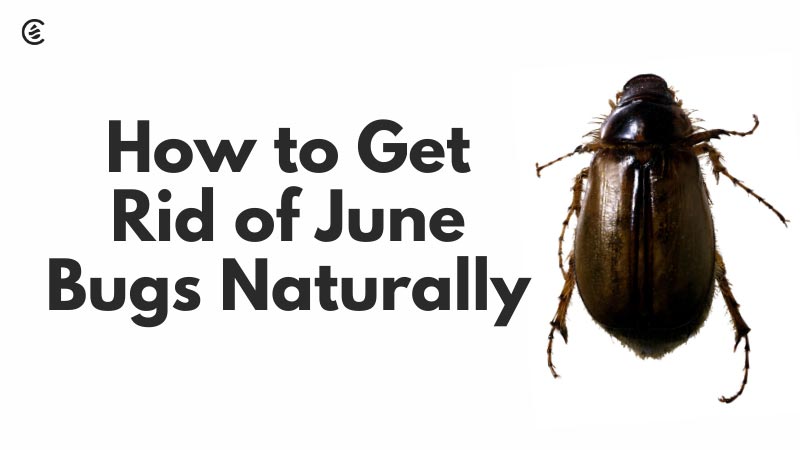
We all know June bugs, those annoying, buzzing beetles that despite centuries of evolution still haven’t quite figured out how to fly yet. But did you know the term “June bug” actually includes a wide variety of plant-eating beetles, including the infamously damaging Japanese beetle? Regardless of the species you experience in your region, these scarab beetles and their larval grub form can cause serious damage to your lawn & garden—and fast!
Also called May or June beetles, June bugs emerge each year in late spring and typically fade completely away by late summer. However, to successfully control these pests, you’ll need to take action at various points throughout the year, not just summer. Don’t worry, it’s not complicated, doesn’t take that much time, and you don’t have to resort to poisonous pesticides to get the job done. Here’s how to get rid of June bugs naturally
PREVENTION
Female June bugs lay eggs in the soil in mid summer and these soon hatch into grubs, which remain just under the surface of the ground through fall. They dig deeper down into your lawn as winter nears and hide out there until they emerge as adult beetles in late spring. Here are some steps you can take to disrupt this life cycle, helping you prevent costly June bug problems before they begin:
- Frequently irrigating your lawn’s turf throughout late June can help discourage females from laying eggs in your yard.
- Throughout June bug season—late spring through summer—avoid cutting your grass too short, aiming for about 3 inches instead. Females prefer to lay their eggs in shorter grass and keeping your turf a little longer can really cut down on the number of eggs that end up in your yard.
- If you garden, make sure to harvest fruits and veggies early and often.
- Lastly, and this is perhaps the most important step to prevent June bug problems, maintain a healthy lawn. If your lawn is host to various other harmful bugs or in otherwise poor condition, it’s going to be far more attractive to June bugs. To protect your yard from damaging pests, apply PCO Choice and Cedar Granules every 4-6 weeks from early March through late October.
MAKE YOUR OWN JUNE BUG TRAP
A little molasses and hot water can go a long way toward shrinking your June bug population. Mix 1 part of each into an empty jar and position the open container near known June bug attractants like plant life and outdoor lighting. They drop in, drown, end of story. Check the trap daily and replenish as needed.
CATCH THEM BY HAND
June bugs are clumsy, fly low, and therefore fairly easy to catch. It might seem silly, but collecting these beetles by hand is a quick and effective approach for helping get a June problem under control.
Just catch any adult beetles you spot on vegetation or buzzing around outside and dump them in a cup of soapy water. June bugs usually won’t put up much of a fight during the process, but wear gloves just in case—several species have thorny spikes on their legs that can irritate skin if you grab them just right.
ATTRACT JUNE BUG PREDATORS
You know how they say the enemy of your enemy is your friend? Well, snakes, birds, frogs, toads, and lizards are known June bug predators, meaning they double as effective allies in your battle to get rid of them.
Encourage birds by offering baths and feeders, and attract reptiles and amphibians by providing shallow dishes of water and cool, dark places to hide, like an overturned planter for instance. If you tend to struggle with mosquitoes, this approach likely isn’t for you. Adding additional water sources to your lawn is a big no-no when it comes to mosquito control.
BENEFICIAL NEMATODES
The easiest way to prevent June bug problems is to target them in their vulnerable, yet still damaging larval stage, aka grubs. Popular in gardening circles, the microscopic parasitic worms known as beneficial nematodes can help you in this arena. Simply pick some up at your local garden store or online and introduce them into your lawn as directed. For best results, apply them in early fall or mid spring.
BACILLUS THURINGIENSIS
Bacillus thuringiensis, like beneficial nematodes, can be introduced into your lawn’s soil to attack June bugs in their grub stage. A bacterium that’s toxic to many undesirable garden pests when ingested, Bt can be picked up a your local garden store and usually comes in either a powder or liquid form. And don’t worry, it’s not toxic to pets or people.
Simply sprinkle or spray Bt throughout your yard or the most affected areas, like your garden. If you tend to experience heavy June Bug problems annually, you might need to reapply every few weeks during fall and early spring.


